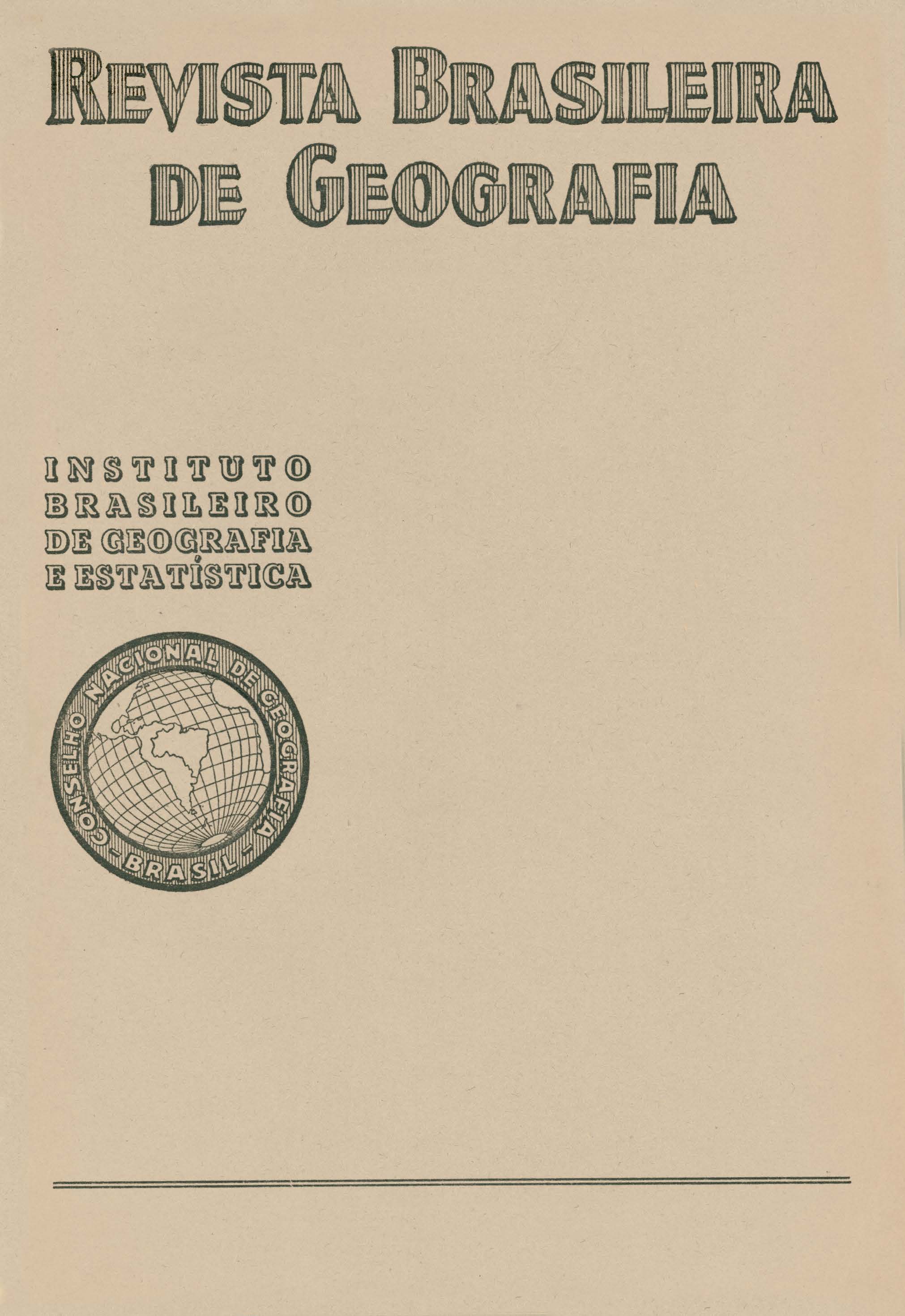Devassamento e ocupação da Amazônia brasileira
Abstract
The study of the main explorations of the Amazon River and of the settlement of its magestic valley is condensed in this article by VIRGÍLIO Correia FILHO, technical assistant to the National Council of Geography.
He starts by narrating the adventurous voyage of FRANCISCO DE ORELLANA, companion of Gonçalo PIZARRO, in opening up the Cinnamon Country;-and from whom he separated while looking for provisions in a barquentine. Following one of its tributaries -he reached the river called Marañon on the 12th February, 1542 and continued his quest of the unknown. ·
In order to force the natives to contribute with their reserve crops he resorted to violence, to which they replied with the arms at their disposal. He sailed literally between rows of red- skinned bowmen on. both banks of the river. Upon nearing the mouth he was faced with a legion of long-haired, native warriors, whose features seemed very feminine. Hence the reason for the name Amazon, by which would become known the Marañon River of the Indians, or the Paranã-guassú, in the lower course, where it looks more like an arm of the sea, so vast are its dimensions.
Its effective occupation, however, commenced only with the · establishment of Dutch and British forts from the Gurupã to the Xingú, which the Portguese and Brazilians attacked during a warlike decade, ending in 1632 with the silencing of the redoubt of Camaú.
The valley then became frequented by the settlers who made their base of operations In Belém, Parã. Thence set out the expedition commanded by PEDRO TEIXEIRA, qualified to overcome the obstacles it might meet in the upstrean navigation of the river. Thus it succeeded in reaching the port of Paiamina, whence it proceeded to Quito and reported to the Peruvian authorities.
On the way back they were joined by the Jesuits CRISTOVAM D'ACUNA and ANDRÉ D'ARTIGA, the former having later written the book "Nuevo Descubrimiento del Gran Rio de las Amazonas".
After PEDRO TEIXEIRA's expedition no mistery remained in the long river road, which was opened to the penetration of pioneers.
There remained, however, its tributaires, which the War, or Ranson Troops undertook to explore.
Along the same river route followed also the missionaries of various religious orders, who obtained by gentle means the incorporation of the Indians to the community of the whites, of whom they became excellent collaborators.
The natives constituted the majority of the regional population previous to the rubber industry having attracted, during the last century, the Northeasterners, since the great drought Of 1877.
Thus the opening up of Amazonia, followed by its occupation, though still sparse, progressed by successive phases in which the newcomers dominated politically at first, to be, however, later supplanted in other forms of human activity by the natives, who taught them their own usages and habits, traditions and industrial processes, ideas and sentiments, and even the peculiarities of their language. In this way the vernacular was enriched thanks to the persevering and conservative action of the dusky beauties of the jungle, in whose offspring the fusion of the two races took place.
Having assimilated the Indian habits, which were a result of the adaptation of human life to the Amazonian habitat, the settlements multiplied and increased the toponimy of Amerindian origin, always on the banks of the river.
Such was the case of the colonial village of Barra, whither the seat of government was transferred, which transformed itself into the modern capital of Manaus - a name which recalls the erstwhile dominating tribe of that region -, thus abundantly proving the progressive aspirations of the Amazonian populations and their efficient ability to carry them out to perfection.






